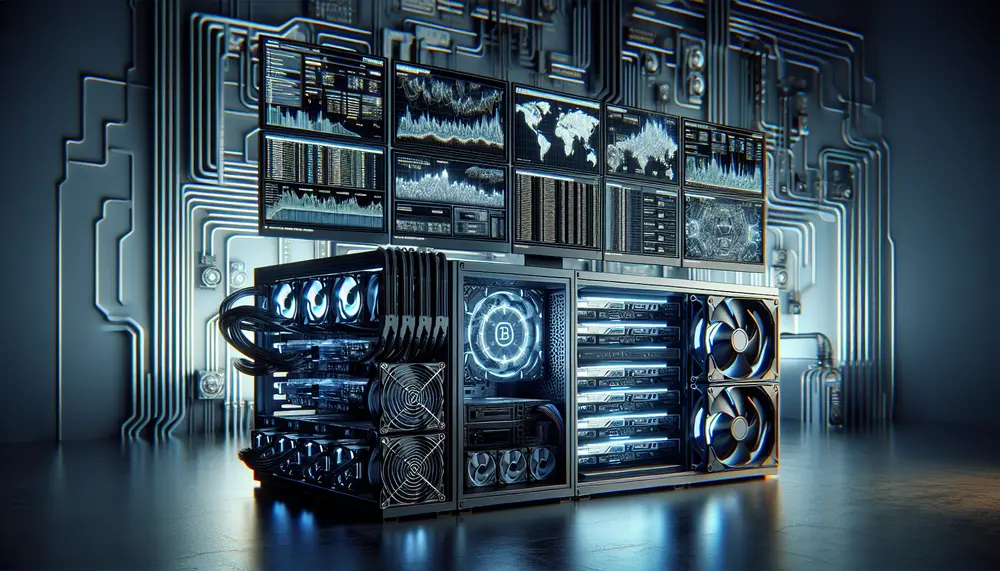Trezor
Trezor
Introducing the Trezor
As we delve deeper into the world of Bitcoin mining, one crucial term you need to understand is Trezor. It's a significant player in the Bitcoin mining sphere and hence, figuring it prominently in our glossary.
What is Trezor?
So, what is a Trezor? In essence, it's a hardware wallet created for Bitcoin. However, its application has now expanded beyond Bitcoin, supporting numerous other cryptocurrencies. A Trezor provides secure offline storage for digital currencies, thereby distancing them from potential online threats.
The Role of Trezor in Bitcoin Mining
But where does Trezor fit into Bitcoin mining? Interestingly, while Trezor itself is not directly involved in mining Bitcoin, it plays a significant part in the process. Once miners have mined new Bitcoins, they need a secure place to store them. That’s where Trezor comes into play.
Why is Trezor Important?
Trezor isn't just another storage option; it provides multiple layers of security that make it a preferred choice for Bitcoin miners. Its key attraction lies in its ability to keep your Bitcoin private keys offline and safe from online threats such as hackers. Furthermore, even in the event of losing your Trezor, its advanced recovery mechanism ensures you won't lose your Bitcoins.
Is Trezor easy to use?
While integrating security, Trezor also maintains simplicity for its users. With an intuitive interface that's easy to navigate, it ensures anyone, regardless of their tech knowledge, can safely store their mined Bitcoin or any other supported cryptocurrency.
Conclusion
Fulfilling a vital need for secure storage in the cryptocurrency universe, Trezor has become a cornerstone product. Its multiple security layers protect one’s investment in Bitcoin, while its user-friendly interface makes the process easier for all. Whether you're a Bitcoin miner looking for safe storage, or someone dabbling in other cryptocurrencies, a Trezor might be your best pick!
Blog Posts with the term: Trezor

This guide provides a comprehensive overview of setting up an Ethereum mining rig, covering essential components like GPUs and motherboards, as well as key concepts such as Proof of Work (PoW) and hashrate. By the end, readers will understand how...

USDT (Tether) is a stablecoin pegged to the US Dollar, offering stability and liquidity in the cryptocurrency market. Unlike traditional cryptocurrencies that are mined, USDT can be earned through methods like liquidity mining, staking, and cloud mining; setting up involves...

This article provides a comprehensive guide on using MetaMask for Ethereum mining, covering the setup process, connecting to mining pools, and optimizing configurations. By following these steps, beginners can efficiently start their Ethereum mining journey with enhanced security and performance....

ETH mining withdrawal involves transferring mined Ethereum from a mining pool to your personal wallet, which is essential for security, liquidity, usage flexibility, and ownership. To withdraw ETH successfully, log in to your mining pool account, verify your balance meets...

The article introduces a method of mining Ethereum (ETH) using Tether (USDT), highlighting the benefits such as stability, liquidity, and reduced risk. It provides a step-by-step guide on acquiring USDT, choosing a mining pool, setting up hardware and software for...

The article provides a comprehensive guide to building a successful crypto mining empire, covering the basics of crypto mining, essential hardware choices, and strategies for selecting profitable cryptocurrencies. It emphasizes understanding key components like blockchain, mining hardware (CPU, GPU, ASIC),...

Crypto mining in New Zealand is attractive due to its cool climate, renewable energy sources, and stable political environment. This guide covers the basics of crypto mining, types of hardware (ASIC vs. GPU), and steps for setting up a mining...

Monero mining requires understanding the minimum hardware and software requirements to avoid unnecessary expenses and maximize efficiency. Essential components include a modern multi-core CPU, at least 8GB of RAM, an SSD for storage, effective cooling solutions, and a reliable power...

Ethereum mining wallets are essential for storing, managing, and securing mined Ethereum (ETH), with various types like hardware, mobile, browser-based, and desktop wallets offering different features. In 2024, top choices include Guarda Wallet for security, Exodus for beginners due to...

Crypto mining yield refers to the amount of cryptocurrency earned through mining activities, influenced by factors like hash rate, network difficulty, block reward, electricity costs, and pool fees. To maximize yield, focus on selecting the right hardware (ASICs for Bitcoin...

The article provides a comprehensive guide to ZEC crypto mining, covering the basics of Zcash (ZEC) mining, necessary equipment, setup instructions for a mining rig, and tips for optimizing operations. It highlights the benefits of choosing ZEC due to its...

Horizen is a blockchain platform that uses sidechain technology for privacy and scalability, with mining involving solving complex problems via the Equihash algorithm to earn $ZEN. The article provides detailed steps on setting up hardware, installing software, and joining mining...

Crypto mining in 2024 is characterized by rapid technological advancements, increased competition, and a focus on sustainability; new technologies like next-generation ASIC miners, quantum computing, advanced cooling solutions, AI integration, and decentralized mining pools are reshaping the industry. Profitability depends...

Choosing the right Ravencoin wallet for mining is essential to ensure the safety and accessibility of your mined coins. This article explores various types of wallets, including software, hardware, desktop, mobile, and paper wallets, detailing their features to help you...

